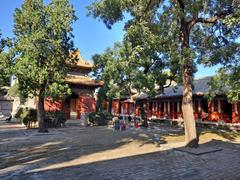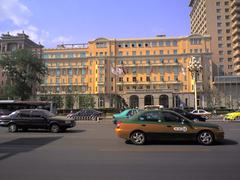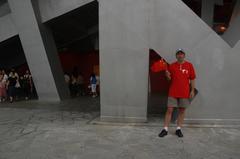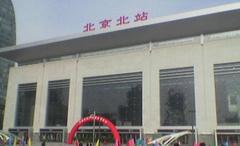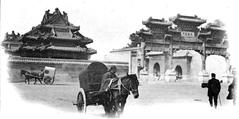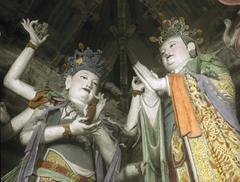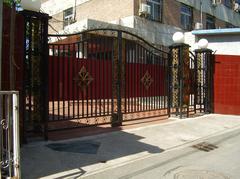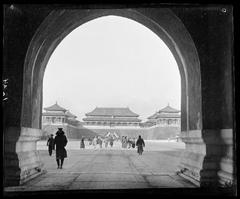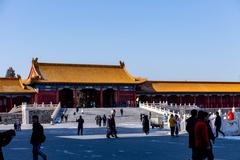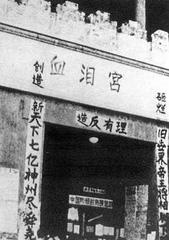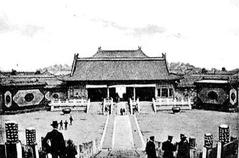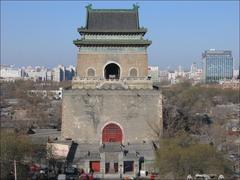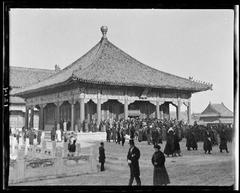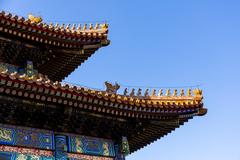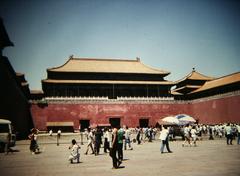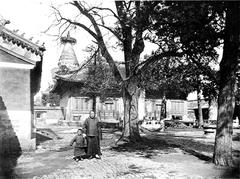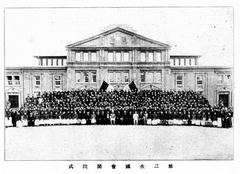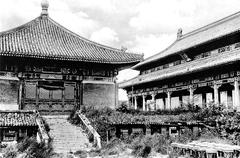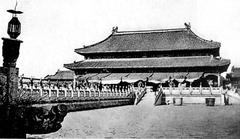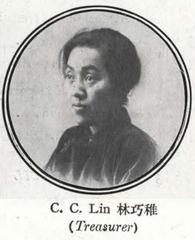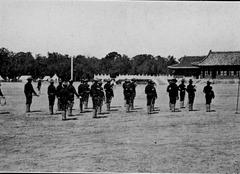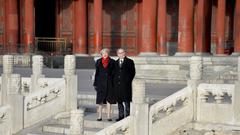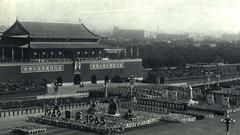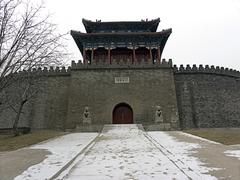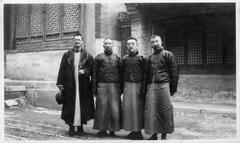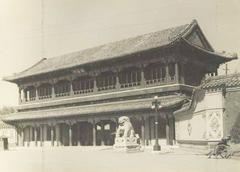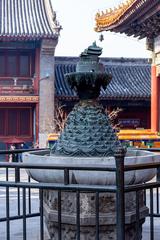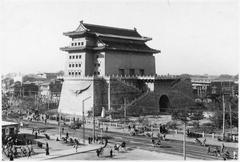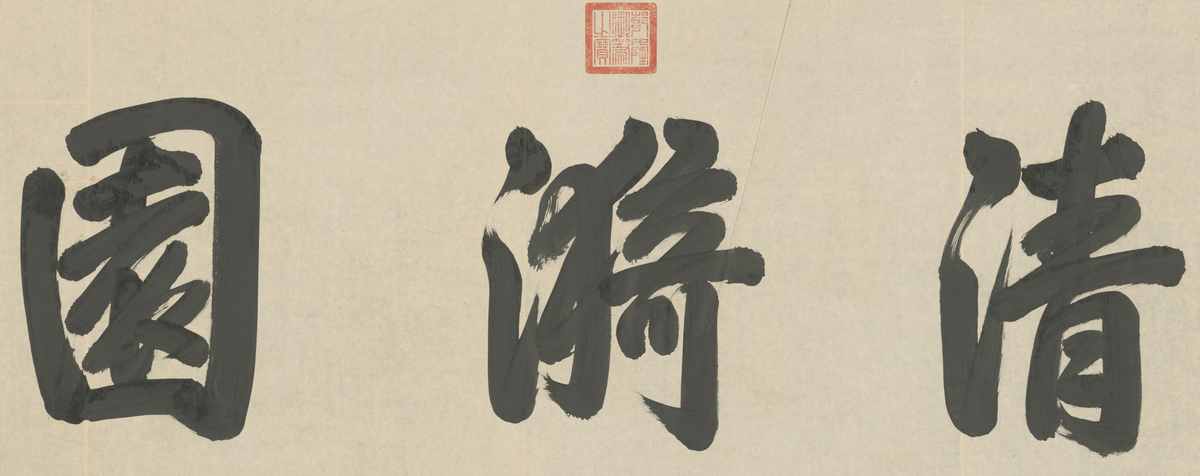
Visiting Harmony Garden in Beijing: Hours, Tickets, and Tips
Publication Date: 18/07/2024
Introduction to Harmony Garden
This comprehensive guide aims to provide all the essential information for planning a visit to these historical gems, from visiting hours and ticket prices to travel tips and nearby attractions. Whether you’re a history enthusiast, nature lover, or simply seeking a peaceful retreat, this guide will help you make the most of your visit to the Harmonious Interest Garden and Xiequ Garden.
Contents Overview
- Discover the Harmonious Interest Garden
- Origins in Imperial Patronage
- A Microcosm of Natural Beauty
- Architectural Marvels and Symbolic Landscapes
- A Legacy of Restoration and Renewal
- Visiting the Harmonious Interest Garden
- Opening Hours
- Ticket Prices
- Guided Tours
- Travel Tips
- How to Get There
- Best Times to Visit
- Nearby Attractions
- Accessibility
- FAQ
- Exploring Xiequ Garden
- Main Attractions of Xiequ Garden
- The Halls of Xiequ Garden
- Harmony and Interest Hall
- Knowing Fish Pavilion
- Hall of Pure Clouds
- Pavilions and Bridges of Tranquility
- Pavilion for Admiring Orioles
- Pavilion of Distant Fragrance
- Verdant Cloud Bridge
- Natural Wonders and Scenic Spots
- Mountain Peaks
- Lush Greenery
- Serene Waterways
- Exploring the Cultural Significance
- Tips for a Memorable Visit
- Visitor Information
- FAQ
Discover the Harmonious Interest Garden: Visiting Hours, Tickets, and Historical Insights
Nestled within the larger UNESCO World Heritage Site of the Summer Palace in Beijing, the Harmonious Interest Garden (谐趣园) stands as a captivating testament to Chinese landscape design and imperial history. Here, we will explore everything you need to know about visiting this enchanting garden, from its rich history and cultural significance to practical visitor information like ticket prices and opening hours.
Origins in Imperial Patronage
The Harmonious Interest Garden was constructed in 1750, during the reign of the Qianlong Emperor of the Qing dynasty. It was intended as a gift for the emperor’s mother, Empress Dowager Chongqing, on the occasion of her 60th birthday. The garden’s creation was overseen by Changchun Yuan, a prominent court painter and architect who drew inspiration from the renowned Jichang Garden (Garden of Cultivated Harmony) in Wuxi, Jiangsu province.
A Microcosm of Natural Beauty
Spanning over 6 acres, the Harmonious Interest Garden exemplifies the traditional Chinese principle of “borrowed scenery” (借景). This technique involves incorporating elements of the surrounding landscape into the garden’s design, creating an illusion of greater size and depth. The garden masterfully integrates the nearby Wanshou Mountain and Kunming Lake, blurring the boundaries between the man-made and natural worlds.
Architectural Marvels and Symbolic Landscapes
The garden’s layout is a microcosm of the natural world, featuring a harmonious blend of hills, water bodies, pavilions, bridges, and winding pathways. Key architectural highlights include:
- Zhiyuan Zhai (Knowing Spring Studio) - This two-story building served as the primary residence for the Qianlong Emperor during his visits to the garden. Its elevated position offers panoramic views of the surrounding landscape.
- Duobao Glazed Pagoda - Inspired by the design of a Tibetan Buddhist pagoda, this colorful structure adds a touch of exoticism to the garden’s landscape.
- Huzitou (Tiger’s Head Wall) - This intricately designed wall, featuring a carved tiger’s head, serves as a symbolic guardian to the garden’s entrance.
A Legacy of Restoration and Renewal
The Harmonious Interest Garden, like many historical sites in China, has witnessed periods of both splendor and decline. During the Second Opium War in 1860, the garden suffered significant damage at the hands of Anglo-French forces. However, it underwent extensive restoration efforts in the late 19th century under the guidance of Empress Dowager Cixi.
Further renovations were undertaken in the 20th century, ensuring the preservation of this cultural treasure for future generations. Today, the Harmonious Interest Garden stands as a testament to the enduring legacy of Chinese landscape architecture and the importance placed on harmony between humanity and nature.
Visiting the Harmonious Interest Garden
Opening Hours - The garden is open daily from 8:00 AM to 5:00 PM.
Ticket Prices - Entry to the Harmonious Interest Garden is included in the general admission ticket to the Summer Palace, which costs ¥30 (around $4.50 USD) for adults.
Guided Tours - Guided tours are available in multiple languages and can be booked through the official Summer Palace website.
Travel Tips
How to Get There - The Harmonious Interest Garden is located within the Summer Palace in Beijing. It is accessible via public transportation, with several bus routes and a nearby metro station (Beigongmen Station on Line 4).
Best Times to Visit - The best times to visit are during the spring and autumn months when the weather is mild, and the garden’s natural beauty is at its peak.
Nearby Attractions
While visiting the Harmonious Interest Garden, consider exploring other nearby attractions within the Summer Palace complex, such as:
- Longevity Hill (Wanshou Shan) - Offers stunning views and several historic buildings.
- Kunming Lake - Enjoy a boat ride or a leisurely walk around the lake.
Accessibility
The Harmonious Interest Garden strives to be accessible to all visitors. There are paved pathways suitable for wheelchairs, and assistance is available upon request.
FAQ
Q: Are there any special events held at the Harmonious Interest Garden?
A: Yes, the garden occasionally hosts cultural events and traditional performances. Check the official Summer Palace website for the latest updates.
Q: Can I bring food into the garden?
A: Outside food is not permitted within the garden. However, there are several dining options available within the Summer Palace grounds.
Q: Is photography allowed in the garden?
A: Yes, photography is allowed for personal use. Professional photography requires special permission.
Exploring Xiequ Garden: Visiting Hours, Tickets, and Main Attractions in Beijing
Nestled within the grounds of the Summer Palace in Beijing, Xiequ Garden is a hidden gem that offers visitors a serene escape from the bustling city. This article will guide you through the main attractions, visiting hours, ticket information, and tips for making the most of your visit to this historical site.
Main Attractions of 谐趣园 (Xiequ Garden)
谐趣园 (Xiequ Garden), though smaller than its neighbor, the Summer Palace, boasts a concentrated collection of captivating sights. Each structure and natural element is carefully placed to create a harmonious blend of architectural grandeur and natural beauty. Here are some of the must-see attractions within this charming garden:
The Halls of Xiequ Garden
-
Harmony and Interest Hall (谐趣园) - This central building, from which the garden takes its name, provides picturesque views of the surrounding landscape. Its elegant design and historical significance make it a prime spot for photography and quiet contemplation.
-
Knowing Fish Pavilion (知鱼亭) - Perched over the water, this pavilion offers a unique vantage point to observe the playful koi fish in the pond below. The name alludes to a philosophical concept from Zhuangzi, adding a layer of intellectual depth to the experience.
-
Hall of Pure Clouds (澄云堂) - This hall, with its simple yet refined design, embodies the pursuit of tranquility and clarity. Its elevated location offers sweeping views of the garden, inviting visitors to appreciate the surrounding beauty.
Pavilions and Bridges of Tranquility
-
Pavilion for Admiring Orioles (听鹂馆) - As its name suggests, this pavilion was designed for enjoying the melodic songs of orioles. Its serene atmosphere and delicate architecture make it a perfect spot for a moment of peaceful reflection.
-
Pavilion of Distant Fragrance (远香堂) - This pavilion derives its name from its location amidst blossoming plum trees. During spring, the air fills with the sweet scent of plum blossoms, creating a truly enchanting sensory experience.
-
Verdant Cloud Bridge (绿漪桥) - This zigzag bridge, a classic element of Chinese garden design, adds a sense of playful exploration to the garden. Its reflections on the water’s surface enhance the surrounding scenery, creating a captivating visual effect.
Natural Wonders and Scenic Spots
-
Mountain Peaks - The garden features several man-made hills, each offering unique perspectives of the landscape. Climbing to their summits rewards visitors with panoramic views of the garden’s layout and the distant towers of the Summer Palace.
-
Lush Greenery - Xiequ Garden is renowned for its diverse flora, including ancient trees, vibrant flowers, and delicate bamboo groves. The carefully curated vegetation changes with the seasons, offering a different visual feast throughout the year.
-
Serene Waterways - The garden is interwoven with tranquil ponds and streams, their surfaces reflecting the sky and surrounding structures. These waterways not only enhance the garden’s beauty but also create a sense of peace and tranquility.
Exploring the Cultural Significance
Beyond its aesthetic appeal, Xiequ Garden holds significant cultural and historical value. Originally a retreat for emperors seeking respite from the formalities of court life, the garden embodies the principles of traditional Chinese garden design. These principles emphasize the harmonious coexistence of nature and architecture, creating a microcosm of the natural world within a confined space.
The garden’s various structures, each with its unique name and purpose, reflect different aspects of Chinese philosophy and aesthetics. For instance, the names of pavilions often allude to literary works or philosophical concepts, inviting visitors to contemplate deeper meanings beyond the surface beauty.
Tips for a Memorable Visit
-
Combine your visit with the Summer Palace - Located within the grounds of the Summer Palace, Xiequ Garden can be easily combined with a visit to this larger, equally impressive imperial garden.
-
Allow ample time for exploration - Though smaller than the Summer Palace, Xiequ Garden offers a wealth of sights to discover. Allocate at least two hours to fully appreciate its beauty and tranquility.
-
Visit during different seasons - The garden’s appearance transforms throughout the year, offering unique experiences with each season. Spring brings vibrant blossoms, summer boasts lush greenery, autumn showcases colorful foliage, and winter offers a serene, snow-dusted landscape.
-
Engage with the garden’s history - Take time to read about the garden’s history and the stories behind its various structures. This will enrich your understanding and appreciation of the garden’s cultural significance.
-
Capture the beauty - The garden provides countless picturesque spots for photography. Don’t forget your camera to capture the memories of your visit.
Visitor Information
-
Visiting Hours - Xiequ Garden is open daily from 6:30 AM to 6:00 PM.
-
Tickets - Tickets cost CNY 10 during the peak season (April 1st - October 31st) and CNY 5 during the off-season (November 1st - March 31st). They can be purchased at the entrance or online through the official website.
-
Accessibility - Xiequ Garden offers accessible paths and facilities for visitors with disabilities.
FAQ
Q: What are the visiting hours for Xiequ Garden?
A: Xiequ Garden is open daily from 6:30 AM to 6:00 PM.
Q: How much are tickets for Xiequ Garden?
A: Tickets cost CNY 10 during the peak season (April 1st - October 31st) and CNY 5 during the off-season (November 1st - March 31st).
Q: Is Xiequ Garden accessible for visitors with disabilities?
A: Yes, Xiequ Garden offers accessible paths and facilities for visitors with disabilities.
Conclusion and Call to Action
A visit to Xiequ Garden is a journey through time, offering a peaceful retreat filled with cultural and historical significance. Be sure to download our mobile app Audiala for more travel tips, check out other related posts, and follow us on social media for the latest updates on historical sites in Beijing.
By immersing yourself in the serene ambiance, admiring the architectural marvels, and reflecting on the cultural significance, a visit to Xiequ Garden promises a truly memorable experience.




